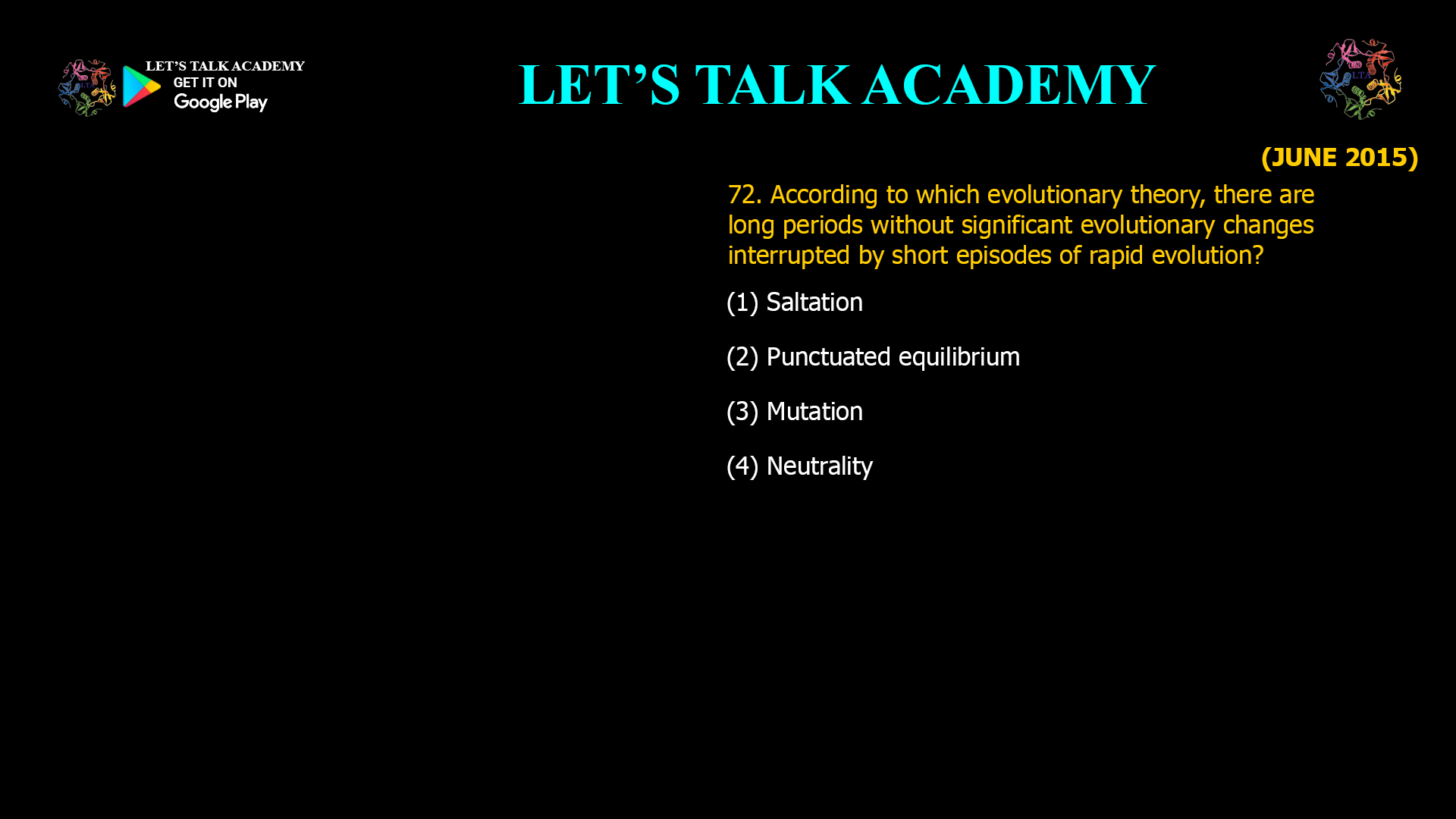- According to which evolutionary theory, there are long periods without significant evolutionary changes interrupted by short episodes of rapid evolution?
(1) Saltation
(2) Punctuated equilibrium
(3) Mutation
(4) NeutralityWhat Is Punctuated Equilibrium?
Punctuated equilibrium was first formulated by paleontologists Niles Eldredge and Stephen Jay Gould in 1972. They observed that many species appear suddenly in the fossil record, remain relatively unchanged for long geological periods, and then disappear or are replaced by new species that seem to arise abruptly.
Key features of punctuated equilibrium include:
-
Stasis: Most of a species’ existence is characterized by morphological stability and little evolutionary change.
-
Punctuations: Evolutionary change occurs rapidly, often associated with speciation events, where new species branch off in relatively short geological times.
-
Cladogenesis: The splitting of a lineage into two or more distinct species, rather than a slow transformation of one species into another (anagenesis).
This model explains why the fossil record often lacks intermediate forms and why species appear suddenly and remain stable for millions of years.
How Does Punctuated Equilibrium Differ from Gradualism?
The traditional model of evolution, known as phyletic gradualism, suggests that species evolve through slow, steady, and continuous changes over long periods. In contrast, punctuated equilibrium argues that:
Aspect Phyletic Gradualism Punctuated Equilibrium Evolutionary Change Pace Slow and continuous Long stability interrupted by rapid bursts Speciation Mode Gradual transformation (anagenesis) Rapid splitting of species (cladogenesis) Fossil Record Prediction Many intermediate forms Sudden appearance and stasis Why Does Punctuated Equilibrium Matter?
-
Explains Fossil Patterns: It accounts for the observed gaps and sudden appearances in the fossil record without invoking incomplete data.
-
Highlights Evolutionary Dynamics: It shows that evolutionary change is not always slow and steady but can be episodic.
-
Informs Speciation Studies: It emphasizes the role of geographic isolation and rapid environmental changes in triggering speciation.
Real-World Examples
-
Rapid Speciation in Isolated Populations: Small populations isolated by geographic barriers can evolve quickly due to strong selection and genetic drift.
-
Adaptive Radiations: Events like the diversification of Darwin’s finches in the Galápagos Islands illustrate rapid bursts of evolution.
-
Fossil Evidence: Many fossil lineages show long periods of morphological stability interrupted by sudden changes.
Other Evolutionary Theories to Contrast
-
Saltation: Proposes evolution occurs by large, sudden jumps or mutations, but lacks broad empirical support.
-
Mutation: Refers to genetic changes but does not address the tempo or pattern of evolution.
-
Neutrality: Suggests many mutations are neutral and fixed by genetic drift, focusing on molecular evolution rather than phenotypic change patterns.
Conclusion
The theory that best describes long periods without significant evolutionary changes interrupted by short episodes of rapid evolution is punctuated equilibrium. This concept revolutionized evolutionary biology by challenging the assumption of constant, gradual change and providing a framework that aligns closely with fossil evidence and speciation dynamics.
Correct answer:
(2) Punctuated equilibrium -



